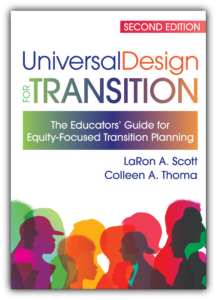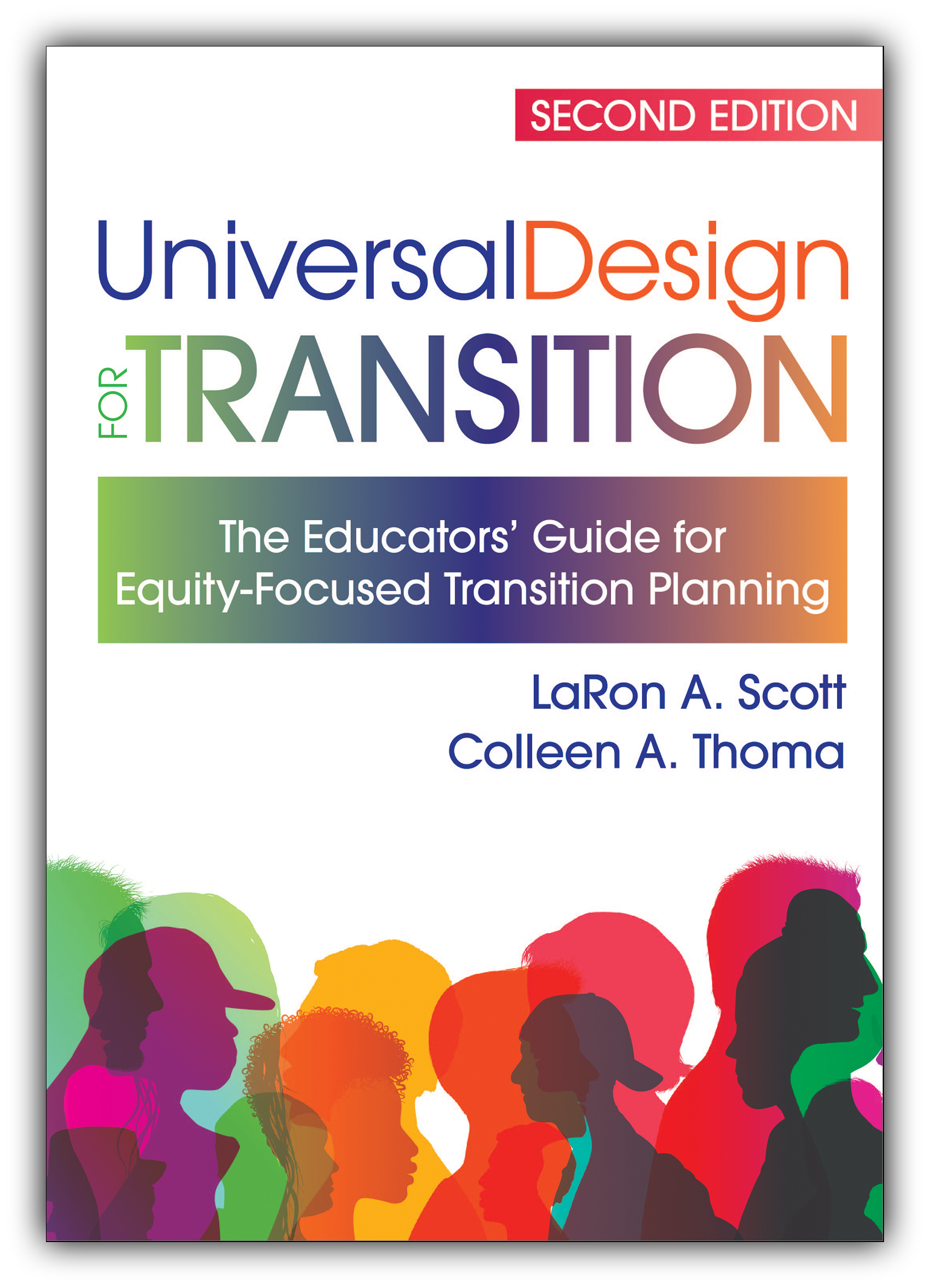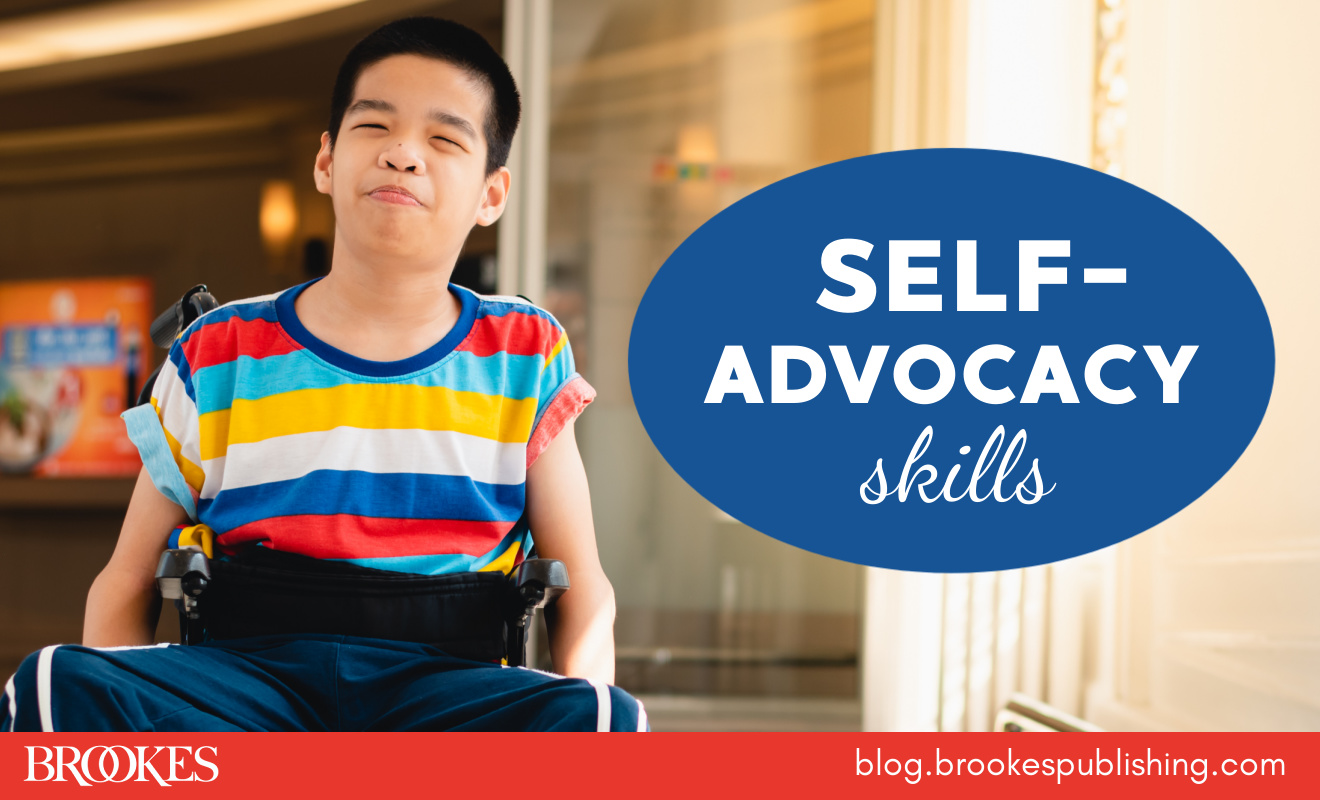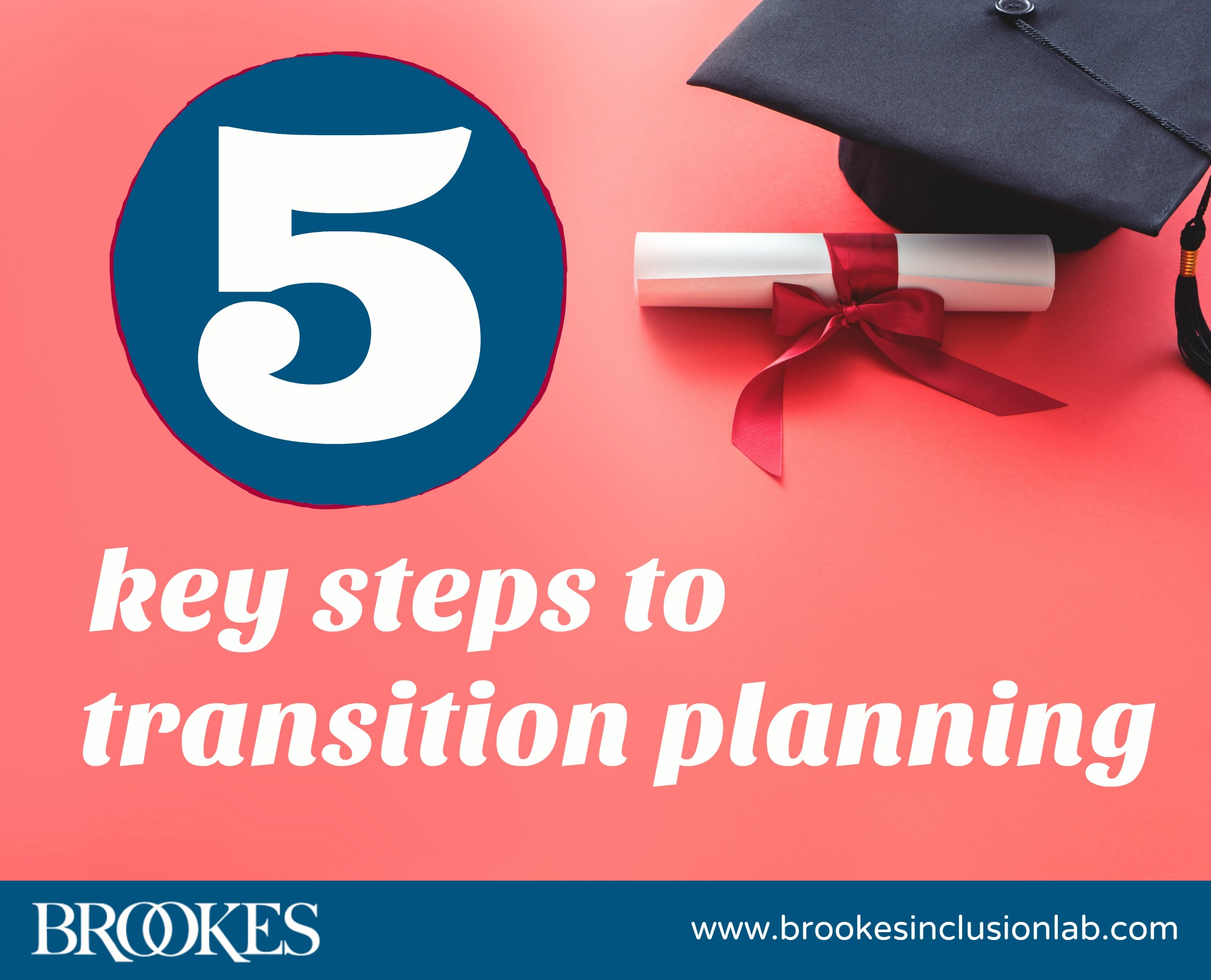Toward More Equitable Transition Outcomes: A Q&A with LaRon A. Scott & Colleen A. Thoma
October 10, 2023
 Students with disabilities from historically marginalized backgrounds often experience inequities in education and support services—leading to negative post-school outcomes. In today’s author Q&A, you’ll learn about a book that helps promote successful adult lives for all students with disabilities, including historically marginalized culturally and linguistically diverse learners. Read on for important insights from LaRon A. Scott, Ed.D. & Colleen A. Thoma, Ph.D., authors of Universal Design for Transition: The Educators’ Guide for Equity Focused Transition Planning, Second Edition.
Students with disabilities from historically marginalized backgrounds often experience inequities in education and support services—leading to negative post-school outcomes. In today’s author Q&A, you’ll learn about a book that helps promote successful adult lives for all students with disabilities, including historically marginalized culturally and linguistically diverse learners. Read on for important insights from LaRon A. Scott, Ed.D. & Colleen A. Thoma, Ph.D., authors of Universal Design for Transition: The Educators’ Guide for Equity Focused Transition Planning, Second Edition.
First, for those who may not be familiar with the universal design for transition (UDT) framework—what is UDT, and how does it relate to universal design for learning (UDL)?
Universal Design for Transition (UDT) was developed as a framework to address both academic and transition goals. We found that so many special educators struggled with doing both and often focused on one while giving only minimal attention to the other. We know that students with disabilities who had successful transitions to adult life benefited from both, so it was a disservice to primarily focus on one rather than both. As we developed this framework, we began with the principles of Universal Design for Learning and added four additional principles based on effective and research-based transition planning and services.
The reimagined new edition of this book aims to promote successful adult lives for all students with disabilities, including historically marginalized culturally and linguistically diverse learners. Can you talk a little about the equity lens in this edition, and how it builds and improves on the first edition?
Too often, educational strategies have been “color blind”—that is, they presume that all students with disabilities need the same approaches and interventions, often based more on their disability category than on other needs. Unfortunately, when we first developed UDT, we did not take into account the unique assets that historically marginalized students with disabilities bring to the process, nor did we specifically identify examples that address some of their common challenges. This text seeks to help special educators and transition stakeholders think about the needs of all, and to use the UDT framework to develop instructional strategies that address a student’s unique needs within the context of their school and community environments.
You use the term “culturally responsive and sustaining instruction” in this new edition. Could you provide a definition of that term and how it’s used in the context of this book?
Culturally responsive teaching (Gay, 2018) is a process for bridging and using the multidimensional and dynamic components of culture as a strength-based approach to teaching and learning. As a result of teachers using culturally responsive practices, students find academic content more meaningful, thus increasing interest levels and academic success, particularly for Native, Latinx, African, and Asian American students. Culturally responsive teaching begins with the premise that students learn best when skills and competencies can be applied in their everyday lives, and that far too many teacher educators are trained in or integrally adopt dominant European American competencies and teaching practices in education. Thus, many teacher educators must learn to celebrate diversity in teaching and acquire culturally responsive teaching practices in all aspects of learning.
Culturally sustaining pedagogy (Paris, 2012; Paris & Alim, 2014), expands upon culturally responsive teaching by having educators build upon youths’ assets while also purposefully facing the impact of privilege and oppression within their individual context in a manner that sustains the cultural pluralism of youth and their families. It goes beyond celebrating diversity to identifying ways that the assets youth and their families bring to the table are supported and sustained.
By “culturally responsive and sustaining,” we mean approaches that reduce opportunity gaps related to student academic achievement and transition planning success (e.g., health, education, school, community living, self-determination). In this text, culturally responsive and sustaining teaching is meant to describe how educators appreciate and affirm students’ sociocultural identities, values, heritages, communities, and backgrounds, as well as recognizing and constructing ways to leverage and sustain students’ cultural differences in teaching and learning while remaining reflexive and reflective during practice.
One important goal of your book is to reduce student opportunity gaps related to academic achievement and transition planning. Could you give a brief description of how your book addresses these gaps that hold students back from achieving their goals and dreams?
The academic achievement gaps for students with disabilities who are also historically marginalized has been well documented, but the gaps related to transition outcomes for this group of students is equally troubling. Black or Latinx students with disabilities are less likely to be employed, to go on to postsecondary education, and to live in poverty than their peers who are White.
To learn why this might be the case, we’ve conducted interviews with a group of Black young men with IDD and their mothers, who reported a number of opportunity gaps. These included not having the option to identify academic classes they wanted to take, not having opportunities to enroll in technology-related programs, not having preferred employment options in their neighborhoods, and not being given opportunities to participate in their transition planning processes in a meaningful way. Some of them reported that no one had ever spoken with them about preparing for the transition to adult life. Another young man described taking a class that was supposed to expose students with disabilities to employment options, but he was instead asked to wipe down tables in the cafeteria (as one of the only jobs he might be able to do based on their beliefs about his ability). This was clearly not a job that he wanted to do. When his mother made the decision to move him to a more affluent school district, she found that they offered a range of different supports to facilitate his transition to employment.
These are all examples of some of the gaps we need to address to provide equal access to academic and transition opportunities for historically marginalized youth with disabilities.
Your book offers not just theoretical information, but also tools and materials that will help readers put UDT into action in diverse schools. Can you describe the practical materials you’ve provided?
Of course. We wanted this book to be a useful guide for special educators and transition stakeholders, so each chapter begins with “Digging Deeper: What Teachers Have to Say,” which provides the thoughts of a current or former teacher related to the content of the chapter. They describe challenges they faced, strategies they tried, and sometimes, tips for others to try.
After that, a list of essential questions are presented to help readers think about some of the most important content that will be shared in this chapter. Sometimes these are also directed toward how a reader would incorporate this information into their practice.
Following the essential content of the chapter, a case study is shared. These help the readers understand the context (strengths, needs, interests, etc.) for a classroom or a specific student within that classroom, so they can see how the specific component of the UDT framework could be used to enhance both academic and transition goals.
After the information about incorporating culturally responsive and sustaining practices into the UDT framework for that specific component, most chapters then have a second case study that provides an example of how that could work in schools. Lastly, a reflection section is provided to summarize the information covered in the chapter, followed by tips for practitioners and print and online resources related to the content of the chapter.
If all schools across the country embraced and implemented your vision of UDT, what do you think the main benefits would be—for students and for society as a whole?
Wow, we would like to believe that if all schools embraced our vision of UDT, we would have more equitable transition outcomes for historically marginalized youth with disabilities. We would also debunk the theory that if a student with a disability is taking classes where he or she is learning the general education curriculum, then they don’t need any transition planning services—or that if a student with a disability is learning an adapted curriculum, then they only need to focus on transition goals and not academic goals. Both types of goals are important to help students with disabilities achieve their vision for adult life.
References
Gay, G. (2018). Culturally responsive teaching: Theory, research, and practice. Teachers College Press.
Paris, D. (2012). Culturally sustaining pedagogy: A needed change in stance, terminology, and practice.
Educational Researcher, 41(3), 93–97. http://doi.org/10.3102/0013189X12441244
Paris, D., & Alim, H. S. (2014). What are we seeking to sustain through culturally sustaining pedagogy? A loving critique forward. Harvard Educational Review, 84(1), 85–100. https://doi.org/10.17763/haer.84.1.982l873k2ht16m77

Universal Design for Transition
The Educators’ Guide for Equity Focused Transition Planning, Second Edition
By LaRon A. Scott, Ed.D. & Colleen A. Thoma, Ph.D., with invited contributors
Like the popular first edition, this important text prepares teachers, transition coordinators, and principals of Grades 6–12 to apply the principles of universal design for learning to transition planning for all learners with disabilities. This reimagined guide adds an equity lens, so that educators can understand the needs of historically marginalized racially and ethnically diverse students. Includes practical tips, examples, and downloadable tools.
Stay up to date on the latest posts, news, strategies, and more!
Sign up for one of our FREE newslettersMore posts like this

5 Steps to a Successful Person-Centered Planning Meeting
September 26, 2023
5 Steps to Strong Self-Advocacy Skills for Students with Disabilities
September 12, 2023

Write a Comment
Your email address will not be published. Required fields are marked *
Post a Comment